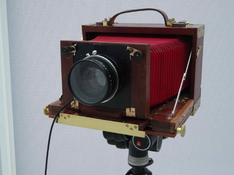BJC0000
Subscriber
Not sure if this is in the right forum so if not feel free to move it!
Probably a stupid question – optics isn’t my strong point.
I know that stopping down increases the depth of field in front of the lens but does it make any difference between the lens and the film?
In other words would a smaller aperture improve sharpness if the flange to focus distance wasn’t spot on?
I realise any difference must be minimal (fractions of a millimetre) but is there any at all?
Probably a stupid question – optics isn’t my strong point.
I know that stopping down increases the depth of field in front of the lens but does it make any difference between the lens and the film?
In other words would a smaller aperture improve sharpness if the flange to focus distance wasn’t spot on?
I realise any difference must be minimal (fractions of a millimetre) but is there any at all?





